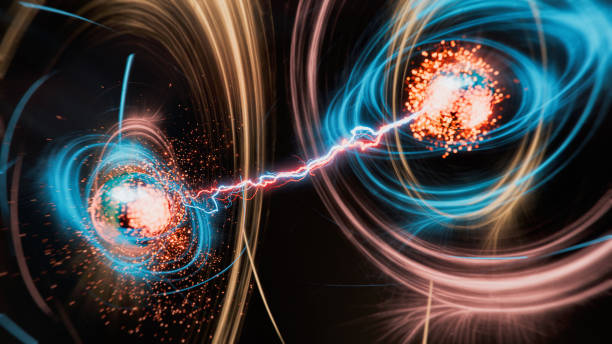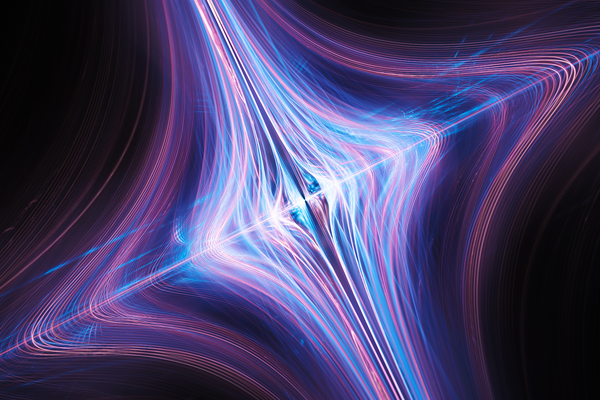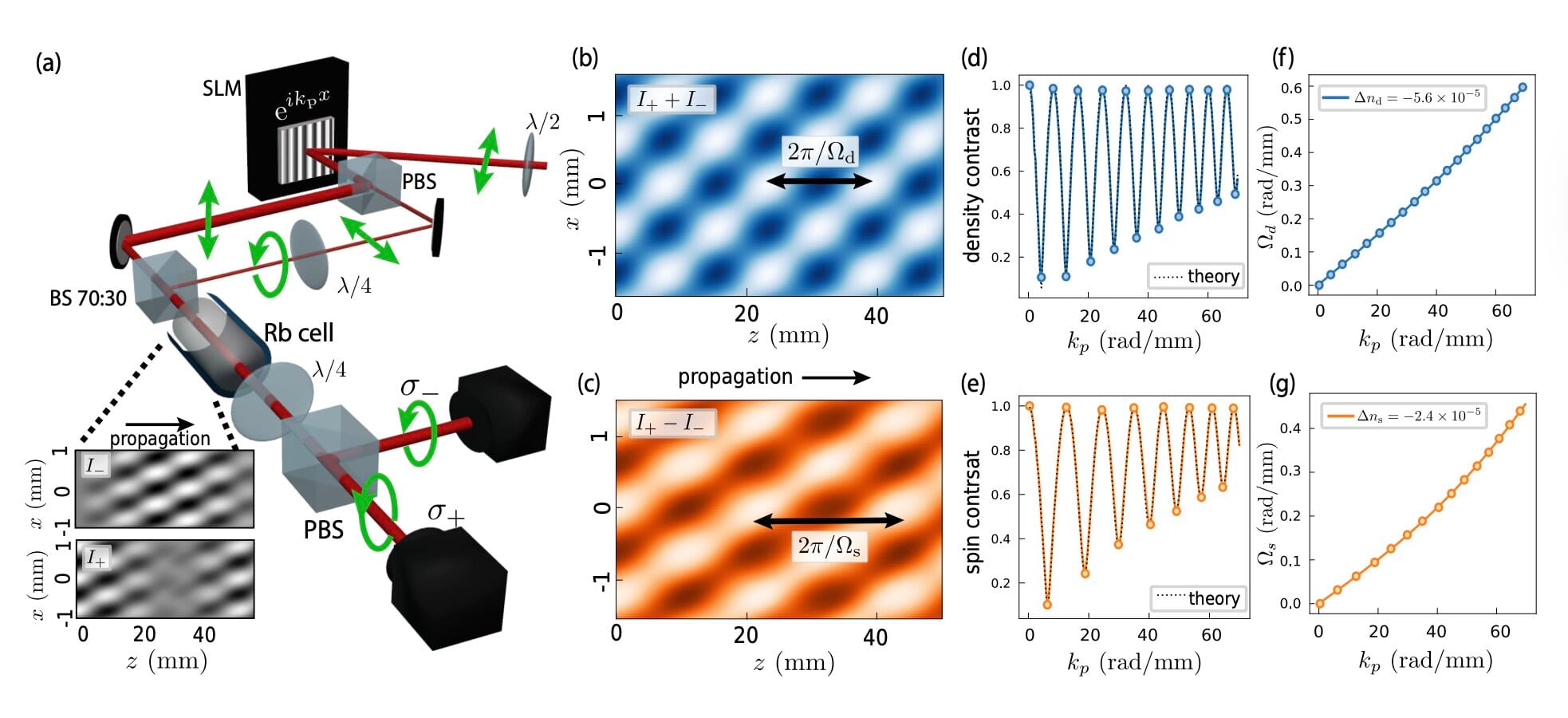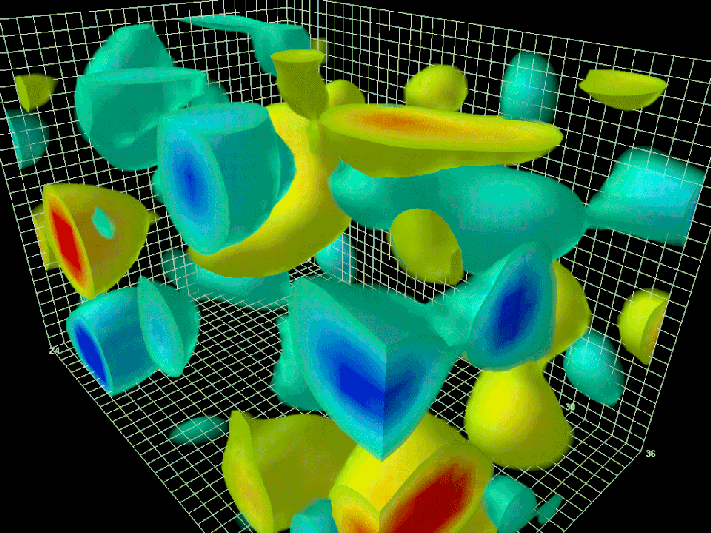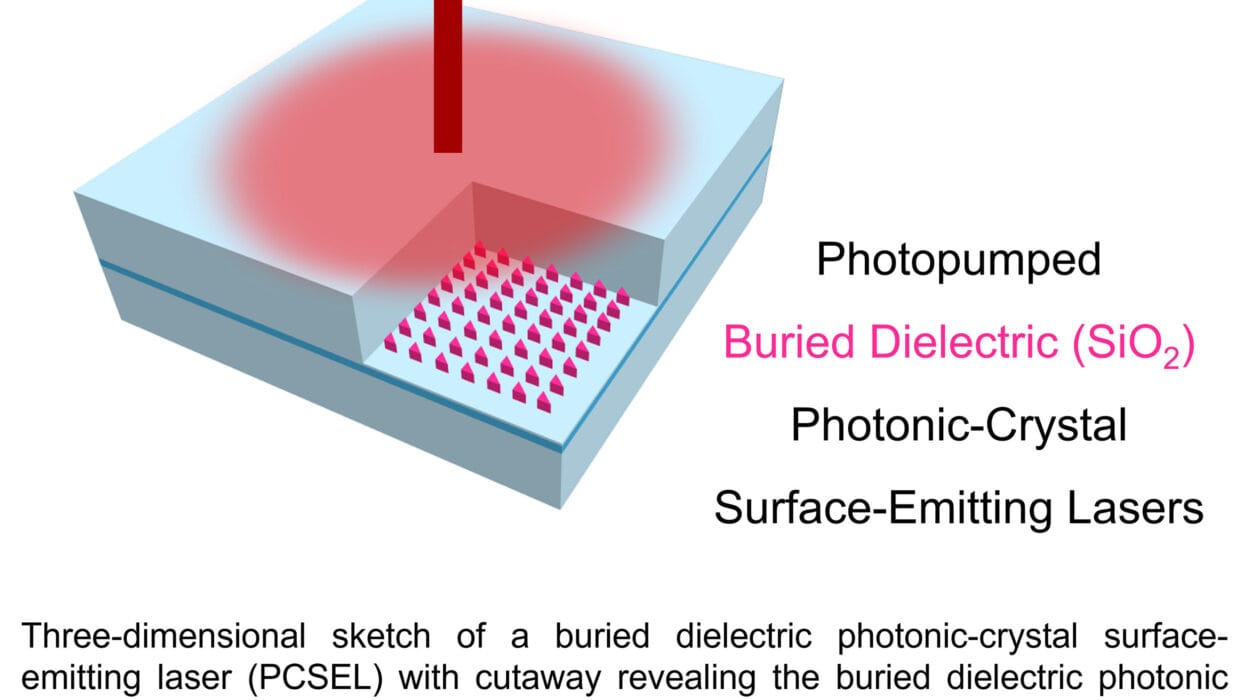Albert Einstein, a man who redefined space, time, and gravity, once described a phenomenon in quantum mechanics as “spooky action at a distance.” The phrase sounds like the title of a ghost story, and in a way, it is—a ghost story told by the universe itself, whispered through the language of quantum particles that seem to know what each other is doing, even when separated by light-years.
This eerie behavior is what physicists call quantum entanglement, and it remains one of the most mysterious, counterintuitive, and yet experimentally confirmed features of our universe. Entanglement is a cornerstone of quantum mechanics, essential to understanding everything from quantum computing to black hole physics. It challenges our deepest intuitions about the separability of objects, the speed of information, and even the nature of reality itself.
In this article, we’ll take a journey through the weird and wonderful world of quantum entanglement. We’ll explore what it is, how it was discovered, why it disturbed Einstein so deeply, and how it’s reshaping the future of science and technology.
The Birth of Quantum Mechanics: Shaking the Classical Foundations
To understand quantum entanglement, we need to first step into the revolution that was quantum mechanics. In the early 20th century, physicists were discovering that the universe didn’t always behave in the neat, deterministic fashion described by Isaac Newton. Light, for example, sometimes behaved like a wave and sometimes like a particle. Electrons could occupy multiple states at once, only “choosing” a position when observed.
This new understanding led to the formulation of quantum theory—a framework that replaced classical certainty with probability and duality. The electron wasn’t here or there; it was in a cloud of possibilities, a “wavefunction” that described its potential positions.
One of the early implications of quantum theory was that particles could become entangled. This means that the properties of two particles could become linked in such a way that knowing something about one would instantly reveal information about the other, no matter how far apart they were. It’s not just that one affects the other—they are part of the same quantum state.
Einstein was not pleased.
Einstein’s Objection: EPR and the Search for Hidden Variables
In 1935, Einstein, along with his colleagues Boris Podolsky and Nathan Rosen, published a paper that would become legendary in the annals of physics. Known as the EPR paper (after their initials), it was titled “Can Quantum-Mechanical Description of Physical Reality Be Considered Complete?” Their answer was a resounding no.
The EPR paradox presented a thought experiment meant to show that quantum mechanics couldn’t possibly be a complete theory. If quantum entanglement were real, then measuring one particle’s property would instantly determine the corresponding property of the entangled partner, even if they were separated by vast distances. This seemed to violate locality, the idea that an object can only be influenced by its immediate surroundings, and causality, the notion that causes must precede effects.
To preserve these principles, Einstein and his collaborators proposed that quantum mechanics must be missing something—some “hidden variables” that determined the outcome of measurements in a deterministic way. They believed the spooky correlations predicted by entanglement were a sign that quantum theory was incomplete.
Einstein famously quipped, “God does not play dice with the universe.” He couldn’t accept that nature was inherently probabilistic and interconnected in such a ghostly fashion.
Schrödinger and the Naming of Entanglement
Around the same time, Austrian physicist Erwin Schrödinger—already famous for his equation and his theoretical cat—coined the term “entanglement” (Verschränkung in German). Schrödinger realized that entanglement was not just a side effect or anomaly in quantum mechanics, but rather a central feature.
He noted that once two systems interact and become entangled, their quantum states become linked in a way that cannot be described independently. In his words, “Best possible knowledge of a whole does not necessarily include best possible knowledge of its parts.” This concept turned the classical view of reality on its head.
Entanglement, Schrödinger suggested, was the characteristic trait of quantum mechanics—the feature that sets it apart from classical physics.
The Thought Experiment: Spinning into Paradox
Let’s imagine a simple version of a thought experiment often used to explain entanglement.
Suppose we create a pair of electrons in a special way that causes their spins to be entangled. Spin, in quantum mechanics, is a fundamental property of particles—something like angular momentum, though it doesn’t correspond to actual spinning in space. Each electron can have spin-up or spin-down, but until measured, its spin exists in a superposition of both states.
When we separate these electrons and send them far apart—say, one to New York and the other to Tokyo—quantum mechanics tells us that the moment we measure one electron and find it to be spin-up, the other must instantly be spin-down. This correlation holds true no matter how far apart the particles are.
It’s as though the universe flips a coin and both particles decide on their outcome together—instantly—across any distance. This seems to imply that some form of faster-than-light communication is occurring, but that would violate Einstein’s theory of relativity, which forbids anything from traveling faster than light.
So what’s going on?
Bell’s Theorem: The Final Blow to Hidden Variables
For decades after the EPR paper, the debate about entanglement remained philosophical. Then, in 1964, a Northern Irish physicist named John Bell entered the scene. Bell formulated a mathematical theorem that would forever change the way we think about quantum reality.
Bell’s Theorem showed that no theory of local hidden variables could reproduce all the predictions of quantum mechanics. In other words, if the universe obeys the rules of locality and realism—the belief that physical properties exist before being measured—then certain statistical outcomes must be true.
But quantum mechanics predicted different outcomes. Bell derived inequalities—now called Bell inequalities—that would allow experimenters to test whether the world was truly local and realistic, or if it behaved in the strange, nonlocal way that entanglement implies.
Experiments began to be carried out in the 1970s and 1980s, most notably by Alain Aspect and his team in France. They used entangled photons and clever detection setups to test Bell’s inequalities. The results were clear and astonishing: quantum mechanics was right. The universe violated Bell’s inequalities, ruling out local hidden variables.
Einstein’s “spooky action” wasn’t an illusion—it was a fact.
What Entanglement Really Means: Nonlocality Without Communication
It’s crucial to understand what entanglement does and doesn’t mean. When two particles are entangled and one is measured, the state of the other becomes instantly known. But this doesn’t allow us to send messages faster than light, because the outcome of any single measurement is random. We can’t choose the result, and so we can’t encode information.
What entanglement reveals is that the universe is nonlocal in a subtle way. The correlations between entangled particles exist beyond space and time. They suggest that the entangled system must be treated as a single, inseparable whole, regardless of distance.
This challenges our classical worldview, where objects are independent and interactions are local. In the quantum world, the whole is more than the sum of its parts, and information about one part is inherently linked to the other.
Entanglement in the Lab: From Theory to Reality
For many years, entanglement remained a strange theoretical curiosity. But advances in experimental techniques have brought it squarely into the realm of engineering and technology.
Physicists can now routinely create entangled photons using nonlinear crystals and laser pulses. They can entangle ions in traps using magnetic fields and lasers. They’ve even entangled macroscopic systems like tiny vibrating mirrors or clouds of atoms.
In 2015, a series of “loophole-free” Bell tests were conducted, closing the last possible escape hatches for local realism. These experiments used extremely fast detectors, random number generators, and huge distances to ensure that no classical communication could explain the results. The verdict? Quantum entanglement is real, and the universe is profoundly nonlocal.
Quantum Entanglement and Teleportation
Perhaps the most science-fiction-sounding application of entanglement is quantum teleportation. In 1993, scientists discovered that it was theoretically possible to teleport the quantum state of a particle from one location to another, using entanglement and classical communication.
Teleportation doesn’t move the particle itself, but rather transmits its exact quantum state, effectively re-creating it at a distant location. This has been demonstrated experimentally many times, over increasing distances, and even between ground stations and satellites in space.
Quantum teleportation is not just a party trick—it’s a vital tool for the development of quantum networks and the quantum internet.
Entanglement in Quantum Computing
Quantum entanglement is the secret sauce behind quantum computing, a radically new kind of information processing. In a classical computer, bits are either 0 or 1. In a quantum computer, qubits can be in superpositions of 0 and 1, and they can be entangled with each other.
This entanglement allows quantum computers to perform certain calculations exponentially faster than classical ones. Tasks like factoring large numbers, simulating quantum systems, and optimizing complex functions could be revolutionized by entangled qubits.
Companies like Google, IBM, and startups like Rigetti are racing to build scalable quantum processors, and entanglement is at the heart of their architectures.
Entanglement and the Fabric of Reality
Beyond technology, entanglement is forcing physicists to rethink the very nature of space, time, and information. Some researchers propose that spacetime itself might emerge from patterns of entanglement between quantum bits. Others suggest that black hole entropy and Hawking radiation can only be understood through entangled particle pairs.
The famous ER=EPR conjecture, proposed by physicists Juan Maldacena and Leonard Susskind, suggests a deep link between entanglement (EPR) and wormholes (ER, for Einstein-Rosen bridges). In this view, entangled particles might be connected by microscopic wormholes—literally tunnels through spacetime.
It’s a speculative but tantalizing idea: that the connectivity of the universe is built not from space, but from entanglement.
Philosophical Implications: What Is Reality?
Quantum entanglement doesn’t just challenge physics—it shakes the foundations of philosophy. If measuring one particle affects another instantly, does that mean objects don’t have definite properties until we look? If so, is reality fundamentally subjective?
Some interpretations of quantum mechanics, like the Copenhagen interpretation, accept this ambiguity. Others, like the Many Worlds interpretation, propose that every quantum event spawns new branches of reality.
Entanglement forces us to confront questions that border on the metaphysical: Is the universe a holistic web of connections? Is information more fundamental than matter? Can we ever truly separate observer from observed?
Conclusion: Embracing the Spookiness
When Einstein called entanglement “spooky action at a distance,” he was expressing his discomfort with a universe that defied common sense. Today, we embrace that spookiness not as a flaw, but as a feature of the quantum world.
Entanglement has gone from a philosophical curiosity to a central pillar of modern physics and technology. It’s the glue that binds particles across the cosmos, the engine of quantum computers, and perhaps even the fabric from which space and time emerge.
In trying to understand entanglement, we’re not just probing the behavior of particles—we’re peering into the very soul of reality. And though the universe may still be haunted by spooky actions, we are beginning to understand the ghost stories it tells.
